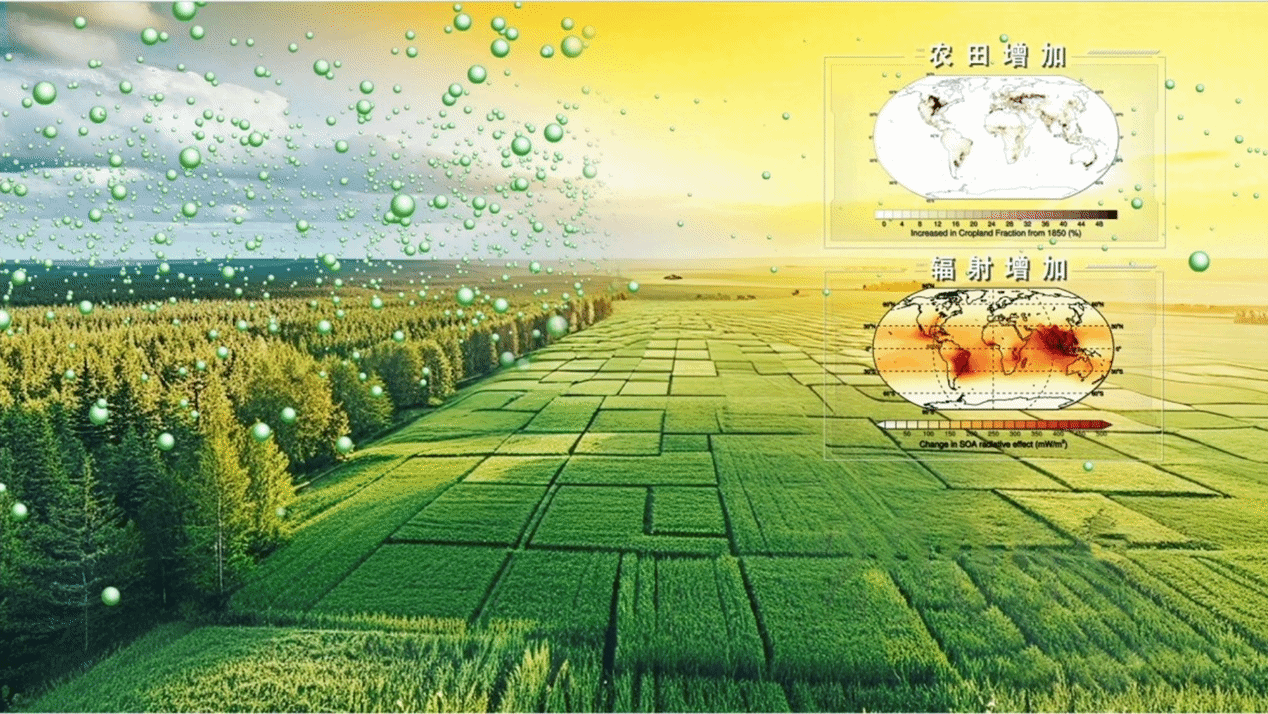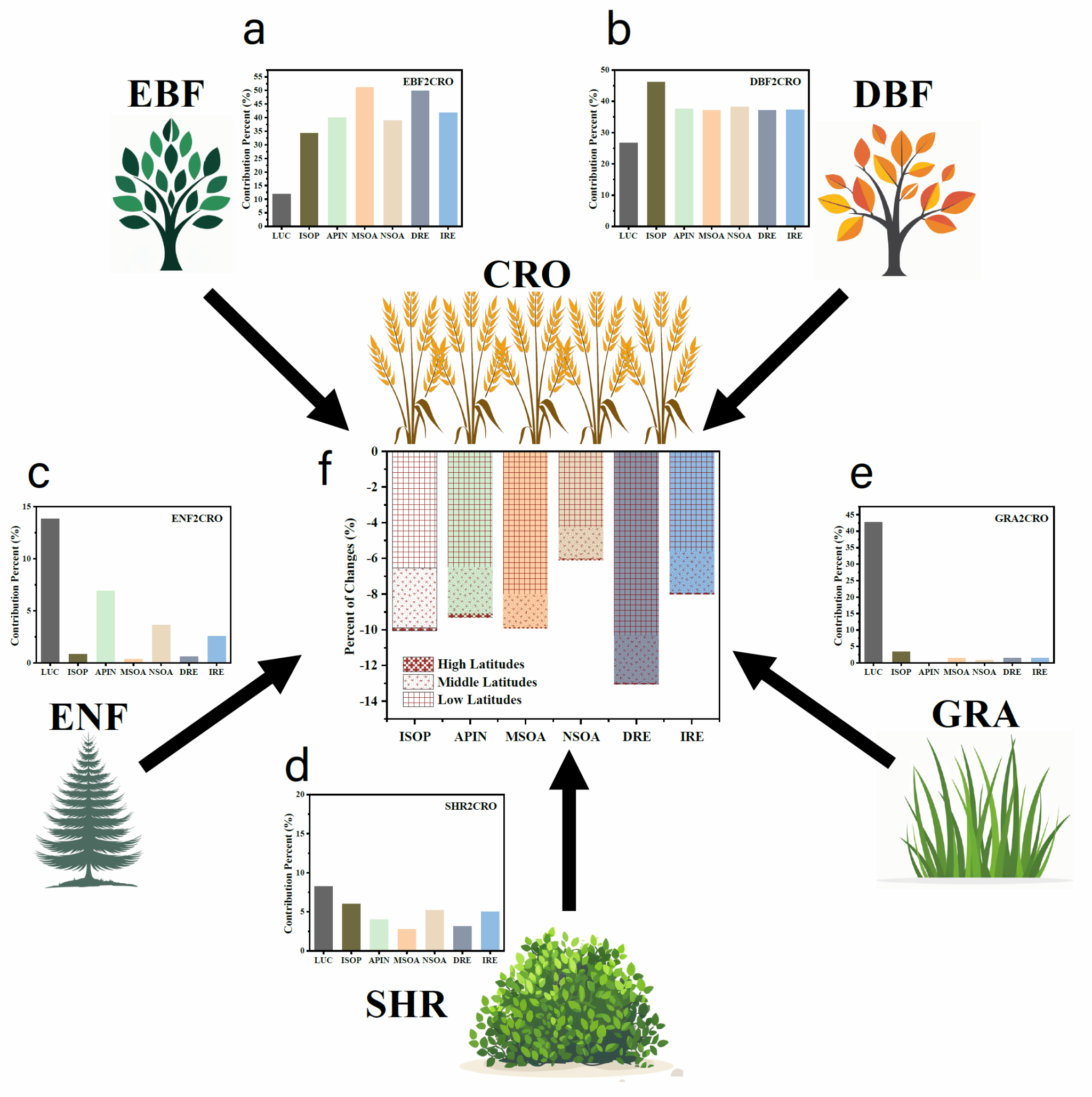Since the Industrial Revolution, to meet the surging food demand of a rapidly growing population, humans have extensively converted forests and grasslands into croplands. How has this transformation impacted the climate? Traditional understanding has focused on changes in carbon storage, albedo, and the water cycle. However, vegetation emits volatile organic compounds (VOCs), which serve as the "raw material" for the formation of secondary organic aerosols (SOA). SOA can directly influence solar radiation (direct effect) and alter cloud properties (indirect effect), playing a crucial natural cooling role in Earth's climate system. So, when forests are replaced by croplands, is this "cooling barrier" compromised? And what is the associated climate cost? This critical question has long been overlooked.
On June 24, the latest research findings, titled “Cropland expansion causes reduction in biogenic secondary organic aerosol and associated radiative cooling” were published in the Nature Geoscience. This study employed an Earth system model incorporating a developed SOA formation mechanism to systematically quantify, for the first time on a global scale, the impact of cropland expansion since the Industrial Revolution on SOA and its radiative forcing. This work fills a key gap in understanding the interactions between land use, organic aerosols, and climate, providing new evidence and perspectives for a more comprehensive assessment of human-induced perturbations to the climate system.

Figure 1. Cropland expansion leads to a reduction in the radiative cooling effect of secondary organic aerosols
The study revealed that global cropland area has increased approximately 2.7-fold since the Industrial Revolution (primarily due to the conversion of forests and grasslands), leading to a roughly 10% reduction in emissions of key SOA precursors and a corresponding 10% decline in global SOA levels. This has weakened their radiative cooling effect. Contributions varied markedly across vegetation types: reductions in evergreen broadleaf forests accounted for 50% of the SOA decline, while grasslands—despite experiencing the largest area loss—had minimal impact. Cropland expansion diminished the net cooling effect of SOAs by 11%, resulting in a net warming effect as high as 146 ± 112 mW m⁻² (equivalent to offsetting 8% of the warming effect from atmospheric CO₂ during the same period). More critically, under future scenarios of climate warming and reduced air pollution, the warming effect of the same cropland expansion could intensify by about 50% (reaching 234 ± 158 mW m⁻²), primarily due to the response of forest VOC emissions to warming and the amplified cloud effects of SOAs in cleaner atmospheric conditions.

Fig. 2. Vegetation-specific SOA reduction and radiative effects changes due to cropland conversion
(EBF: Evergreen Broadleaf Forest, DBF: Deciduous Broadleaf Forest, ENF: Evergreen Needleleaf Forest, SHR: Shrubland, GRA: Grassland, CRO: Cropland)
This research was a collaborative effort between Tianjin University, Tsinghua University, and University of Michigan, Ann Arbor. The first author is Professor Zhu Jialei of Tianjin University, with corresponding authors Professor Fu Pingqing of Tianjin University and Professor Zhang Qiang of Tsinghua University. The study was conducted under the guidance of Professor Liu Congqiang of Tianjin University and Professor Joyce Penner of University of Michigan, Ann Arbor. The research was supported by the National Natural Science Foundation of China (42221001).